Trigonometry
Triangles
Why triangles are important
Learning about electrical theory necessitates the study of triangles. More specifically: right triangles. Before we dig too much into the right triangle, let’s go over two key points about triangles.
- All triangles have three sides. (File this fact under the “thank you Captain Obvious” category.)
- All triangles contain 180 degrees.
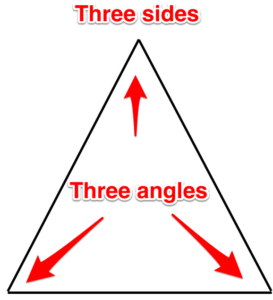
Different triangles
The right triangle is the most common triangle that will be used in electrical theory. It is a good idea to have a basic understanding of other triangles as well. Here are some common triangles you will come across in trigonometry.
Isosceles triangle. This triangle has two sides that are equal, and two angles that are equal.
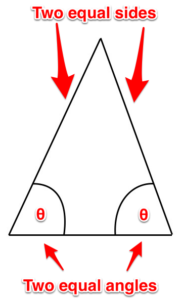
Equilateral triangle. All three sides of this triangle are equal, and all three of its angles are equal too.
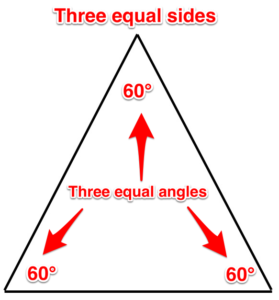
Similar triangles. These triangles each have different sized sides, but they share the same sized angles.
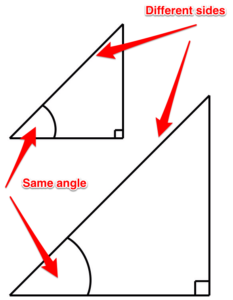
So what about these right triangles you were talking about?
A right triangle is a triangle that has one right angle (equal to 90 degrees). This means that the other two angles are complementary, that is, they must add to 90 degrees.
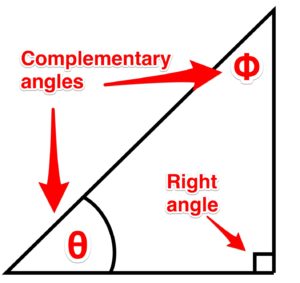
Ok, so what does a right triangle have to do with electrical?
Quite a bit actually.
In the world of electrical theory, we will have to add up values. We call these units vectors (more on the concept of vectors in a later chapter). These vectors each head in a different direction. In fact, they are 90 degrees to each other. When we add them, the sum of these two vectors ends up being the point between the two sides.
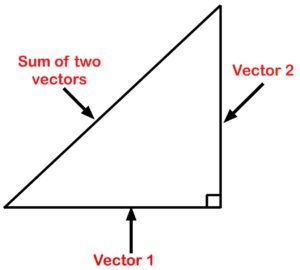
Because they are not heading in the same direction (they are heading in directions that are 90 degrees to each other) we can’t add them up normally. They have to be added vectorially. How do you do this? I’m glad you asked.
Up next: Pythagoras’ theorem

